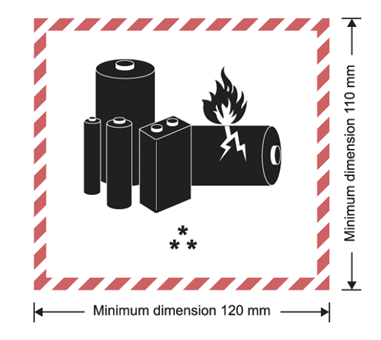By Dawn Allcot
Each year, the IATA Dangerous Goods Regulations standards change as laws evolve to deal with the transportation of new technologies and hazardous – or potentially hazardous – materials. The new 60th edition incorporates all amendments made by the ICAO Dangerous Goods Panel, as well as changes adopted by the IATA Dangerous Goods Board.
Many of the changes in the 60th edition reflect ways to safely transport electronics that use Lithium batteries, as well as the batteries themselves. Shipping L
In the new Dangerous Goods Regulations, IATA has lifted some air transportation restrictions while adding classifications and stricter regulations for labeling, packing and handling these components to minimize risk.
These new regulations will make it easier to transport consumer goods such as smartphones, laptops, smartwatches, and keyfobs. But it’s still important to take special care shipping electronics that use L
Lithium Batteries Now Classified as Dangerous Goods with Specific Hazard Designations
IATA recently added new UN numbers to its list of dangerous goods, including UN 3536, which represents Lithium batteries installed in cargo transport units. This number represents shipments of multimodal containers with battery management systems, Lithium-ion batteries, and other electronics.

Lithium batteries also have a new ERG emergency response drill code. Lithium batteries went from the classification of 9FZ, or “no general inherent risk” to 12FZ, which identifies fire, heat, smoke, toxic, and flammable vapor as hazards inherent for lithium batteries.
For easy visibility, the Class 9 hazard label must not have any text in the bottom half other than the number “9”.
The classification refers to Lithium metal batteries, rechargeable Lithium-ion batteries, and hybrid Lithium batteries, which contain both Lithium metal and Lithium-ion cells. Lithium metal batteries should not be shipped by air as cargo on passenger aircraft by themselves, only as part of a device. Lithium-ion batteries can be shipped by themselves in limited quantities, holding a charge not to exceed 30% of their rated capacity.
IATA Updates DGR Packing Instructions
IATA has changed several DGR Packing Instructions in the 60th edition of its regulations, including limits on the number of spare Lithium cells or batteries that can be safely packaged with equipment.
Changes have also been made to introduce the use of combination packages, with labels to represent the most restrictive classification available.
Hazards and Risks Clarified in 60th Edition of IATA Dangerous Goods Regulations
The 60th edition of IATA standards also changes the word “risk” to “hazard” in many cases to align with the accepted definitions of the words in safety management systems. A “risk” is the likelihood, high or low that a hazard will cause harm or damage, whereas “hazard” is anything with the potential to cause harm or damage.
Stay Up-to-date on Other Changes Before Shipping Goods
IATA also made substantial changes to the classifications and shipping standards of many other substances and items, including class 8 corrosives, ammonium nitrate fertilizers, energetic samples, and any articles containing recognized dangerous goods.
Read the 60th edition of the IATA Dangerous Goods Regulations or consider taking a course to understand how these changes will affect the goods you ship or receive for your business.
Related Sources For Further Reading:
https://www.lion.com/lion-news/august-2018/whats-new-in-the-iata-dgr-60th-edition-for-2019
https://www.iata.org/whatwedo/cargo/dgr/…/DGR-60-EN-significant-changes.pdf
https://www.iata.org/whatwedo/cargo/dgr/Pages/lithium-batteries.aspx

